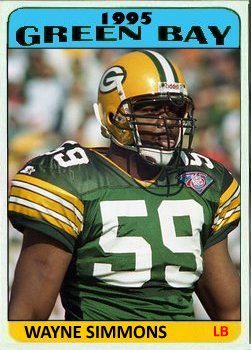Recently, I saluted the passing of the great Green Bay fullback Jimmy Taylor. Although there were many games in which Taylor gained more yards or scored more touchdowns, his greatest day as a Packer came 56 years ago today–the 1962 title game against Sam Huff and the Giants in Yankee Stadium. The Packers were 13-1, first in the league in points scored and fewest points allowed; they beat both the Bears and the Eagles 49-0 that year, but the Lions had displayed some chinks in their armor on Thanksgiving by beating Green Bay handily 26-14. The Giants were no slouches either. They finished 12-2, second in points scored and fourth in points allowed. In addition, the Giants were fired up about being embarrassed 37-0 in previous year’s title game to Green Bay.
Although 64,892 people attended the game in Yankee Stadium, it was blacked out on television in New York, so Giant fans had to drive 75 miles to view it. It was bitter cold day with the temperature 20 degrees at game time and winds gusting to 40 mph. Some players who also played in the Ice Bowl, like linebacker Ray Nitschke, considered the conditions in the 1962 game even tougher. The ground was icy, hard, sharp and inflicted pain every time someone was tackled. The wind negated the Giants vaunted passing offense, and this became a game fought in the trenches. Taylor was the workhorse, carrying the ball 31 times for 85 yards, and the Giants led by Huff gang-tackled him each time often getting in some cheap shots after the play was dead. Jimmy needed stitches on his elbow and bit his tongue so he was spitting blood the whole game. After the game according to announcer Ray Scott, Taylor’s body was black and blue and yellow and purple, a complete mess. In the second quarter, he scored a touchdown from the seven-yard line on the only play he wasn’t tackled all game.
At the half the Packers led 10-0, meaning they had played 6 championship quarters against the Giants in 1961-62 and had outscored them 47-0. The Giants finally got on the board in the third quarter by blocking a Packer punt and falling on the ball in the end zone, but they never did score on the Green Bay defense. That defense was weakened when safety Willie Wood was ejected from the game for knocking down an official while protesting an interference call near the end of the third quarter. However, with Jerry Kramer’s 3 of 5 field goal kicking, the final score was 16-7, and Lombardi’s Packers were two-time champs. Kramer made field goals from 26, 29 and 30 yards but missed from the 37 in the first quarter and the 40 in the final period. In the aftermath of this brutal slugfest, boxing promoter Al Flora offered Sam Huff and Jim Taylor $2,000 for a four-round boxing match, but that never came to pass.
Despite Taylor’s hard-fought heroics, Ray Nitschke was named the game’s MVP for recovering two fumbles and deflecting a pass that was intercepted by teammate Dan Currie, and Ray appeared that night as the mystery guest on the “What’s My Line” TV show. An ironic postscript to the title game coverage of Newsweek was a little note they included regarding the NFL employing a team of ex-FBI agents to ferret out gambling rumors involving four teams with only the Bears named. Of course, Paul Hornung and the Lions Alex Karras would be suspended due to this investigation, and the Bears would win the 1963 title.
(Adapted from Packers by the Numbers.)






Custom cards of Nitschke, Currie and Wood are colorized.




















































